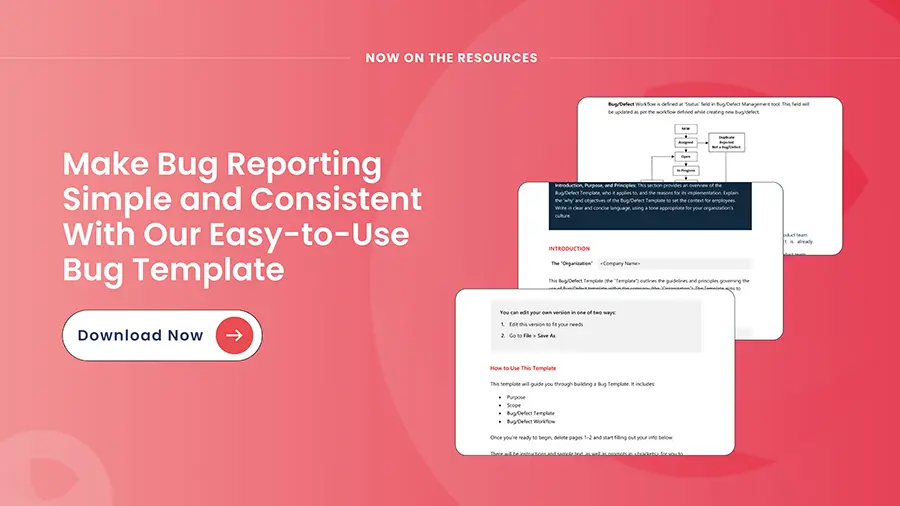As software becomes the primary source of generating revenues, customers’ and employee’ interactions, businesses are choosing to improve quality with speed and scale. Gone are the days when testing used to be the last function sitting at the end of the development lifecycle, now testing must be integrated throughout the development lifecycle. Manual testing cannot keep pace with the agile development and delivery methods and teams need to look for automation to catch up with development functions.
Hence, businesses are quickly shifting to Test Automation to meet the needs of dynamic and demanding customers. This article gives a quick rundown of what Test Automation is, the types of Testing, and what does it take to build a successful Test Automation program.
Without further ado, let’s get started –
What is Test Automation?
Test Automation is the process of leveraging tools, technologies, and agile methodologies to make quality and testing an integral part of the development lifecycle. Whether it’s about launching new products in the market or updating an existing functionality or integrating digital products – testing is an integral part of every software development initiative.
With Test Automation, a wide variety of tests including functional and non-functional can be automated. If you are looking to start your test automation journey or scale it up, considering the Test Automation Pyramid strategy is a good place to begin
Types of Testing
Broadly, Test Automation types can be categorized under two categories – Functional and Non-Functional. Functional testing includes checking the various functionalities of an application using unit, component, UI, Smoke, Sanity, Regression, and Integration testing while non-functional testing includes looking over various other parameters like performance, security, load, stress, volume, and data storage.
- Unit Testing
Unit Testing is a part of the software development process where developers test the smallest parts of the application, often referred to as units. The main aim is to check if a single code in the application is working as intended and determine early errors and build a feedback loop so that developers can take appropriate action at the code writing stage. As developers are continuously writing new codes, unit tests are highly repetitive and manual tasks and can be automated.
- Smoke Testing
Smoke Testing determines where the newly coded build is working fine and there are no blockers because of the new code or functionality. It gives confidence to testing teams to move with further testing. Smoke testing usually consists of repetitive tests that check the major functionalities of any application. It is also known as “Confidence Testing.”
- Integration Testing
Integration Testing is a type of testing where software modules are tested for their flawless integration as a group. The purpose of integration testing is to find out integration challenges between two or more modules in an application.
- Regression Testing
Regression testing involves tests that ensure that after new code is added, the rest of the application is functioning as expected. Sometimes after code updates, some related functionalities get affected and it is important to detect that at the early stages. With a new modification in code, regression testing is done to check that system is performing up to the mark with continuous improvements.
The regression testing suite involves a lot of repetitive tests, hence instead of doing them manually every time, it is a good idea to run them as part of the automated testing suite.
- API Testing
As per research, the usage of APIs has been growing multi-fold and more than 90 percent of developers use API. Hence testing APIs have become extremely important. API or Application Programming Interface that tests various APIs (which acts as the middle layer between UI and Databases) for their functionality, security, performance, and reliability. API testing is part of Integration testing but with the increased usage of APIs across the software development industry, it is essential to highlight them and manage them as part of the Test Automation Suite.
- Security Testing
Security Testing involves a testing application for security vulnerabilities including code auditing, and security scanning for identifying network, cloud, and system weaknesses. Security testing also involves risk assessments, security auditing, ethical hacking, and security posture assessments.
- Performance Testing
Performance testing evaluates how a system works under different workloads concerning stability and responsiveness. Performance testing gathers details about the application’s speed, loading time, reliability, robustness, and resilience by examining factors like query processing time, CPU memory consumption, number of errors in production, and others.
- Acceptance Testing
Acceptance testing also known as user acceptance testing (UAT) tests the software as per the user needs, business processes, and requirements. This testing involves testing from the operational point of view and determining if the system has all the functional criteria to get accepted by users or customers.
- Functional Testing
Functional Testing aims at the testing core and functional requirements of a system. Testers used functional testing plans to ensure that system is functioning as expected and not interfering with other functionalities in between. Businesses must consider automating functional tests because every function needs to be tested thoroughly throughout the development cycle.
Framing and Implementing a successful Test Automation Strategy
Testing is valued more than ever and has become an integral component of modern agile development. This has led to a fundamental shift from a Quality Assurance mindset to a Quality Engineering mindset. Quality Engineering orchestrates multiple checkpoints for ensuring high-quality application from day one involving various teams, pairing testing with continuous integration that automatically tests, packages, and deploys tested code into pre-production and production environment.
This requires a robust test automation strategy that replaces human safeguards with test automation for identifying code defects early in the software development and administers a continuous feedback loop for remediating application issues.
- Align your Business Goals with Test Automation Strategy
Before starting on the Test Automation journey, teams must decide on their goals and what they are trying to achieve with Test Automation. Whether the goal is to improve the time, cost, and quality of the testing function or to enhance Test Automation posture for the future, you should consider the short-term and long-term benefits of Test Automation and how these benefits align with the organization’s goals.
Enhops recommends using our Test Automation advisory services and resources to achieve long-term and sustainable advantage in building your Test Automation strategy. We work closely with our clients to define their overarching quality goals and decide what is the best Test Automation approach for them.
- Establishing the Test Approach
Once a team has established its quality goals, the next step is to plan what tests should be automated, how they need to be run, and how to optimize them at regular intervals. The most effective way to structure tests is going by the Testing Pyramid approach.
The Test Automation Pyramid is a strategic approach to deciding what tests need to be automated first in the test suite. It outlines the sequence of these tests and helps in deciding their frequency (overnight, fortnightly, monthly). The expected result is enforcing a continuous feedback loop throughout the development lifecycle and ensuring that new code changes are not causing any disturbance in existing features. This leads to a lesser time to market, high-quality applications, and better employees productivity.
Our testing experts recommend that your future testing practices must be a natural evolution of current QA approaches and should enable an associated shift in culture. Work with your teams and analyze internal processes inside-out, gather feedback and suggestions and determine what would work to deploy Test Automation and scale it up continuously.
- Selecting the right tools
Nowadays the market is flooded with Test Automation tools, right from codeless test automation tools to open-source, these tools promise and deliver huge benefits to the teams using them. But every team and organization must understand the Test Automation tool landscape and make an informed decision.
Here are a few things to consider when choosing the right Test Automation tools –
- The type of application – What kind of applications are you testing? Is the application web-based or mobile-based? Is it business-users-focused or end-users-focused? Selenium is one of the best tools available in the market to test web-based applications while Appium works well for mobile-based applications.
- Skills – Selecting tools also depends on what kind of current skill sets you have in your testing teams. If you are willing to re-skill or up-skill your team, how much time would they need to understand the new tools and start implementing them? Enhops recommend exploring Test Staffing Solutions with us to ensure that you are getting the right testing talent to get started as early as possible with an unparalleled cost advantage.
- Open source or not – Budget can be a real determining factor in selecting the right tools. If you have a limited budget, consider exploring open source tools but make sure that you are adhering to all security standards.
- Low-Code and No-Code tools – Testing teams need to be agile and look for digital solutions that are simple, fast, and affordable. With the skills shortage that companies are currently experiencing, it makes complete sense to invest in Low-Code and No-Code Test Automation tools and start pilot projects that can be later replicated and scaled.
While typical app testing requires a lot of manual processes, LCNC lets testers use the pre-built module to accelerate the testing process. Granted, this approach won’t be appropriate for every testing team. But done right, LCNC enables a strategic approach to testing applications as part of an organization’s broader push toward Quality Engineering and Digital Transformation.
- Designing the Automation Suite
It is important to design a test automation suite based on the automation test framework standards. When designing tests, software testers use general methods for developing test case functionalities and test data based on the application under test. Some of the best practices to consider are following test design patterns according to the test automation framework, using production or real-time data in test cases, proper naming conventions and coding standards, creating a document and keeping it updated, and implementing time stamping before and after each test.
- Optimizing Automation Continuously
To make the most of your test automation suite, you have to continuously monitor and measure the metrics and strive to improve them. But this doesn’t mean that you keep on changing your test automation suite weekly or over-automate things just to be pulled backward. While you can look for successful test automation recipes, your test automation suite will look significantly different from others.
Driving the Culture Change
Start with communicating about the Why’s and How’s of adopting changing processes, adopting new practices, including new team members in the group, and address all the questions from your team members and employees. Involve your people from the beginning and encourage them to drive a Culture Change throughout the organization. For testing projects, such as adopting new tools, engaging with new managed testing services providers, and re-structuring the team for pair testing, it is very important to gather suggestions from team members so they feel invested and involved. It is also important to showcase failures, celebrate them and learn from the mistakes.
Exploring Test Automation Services for Your Organization, Contact Us



